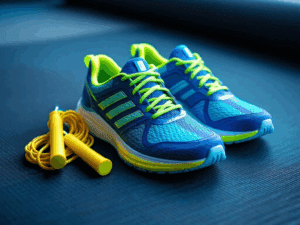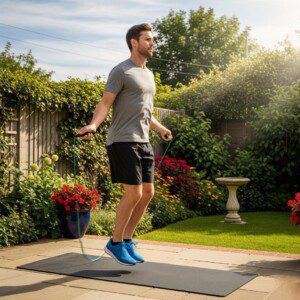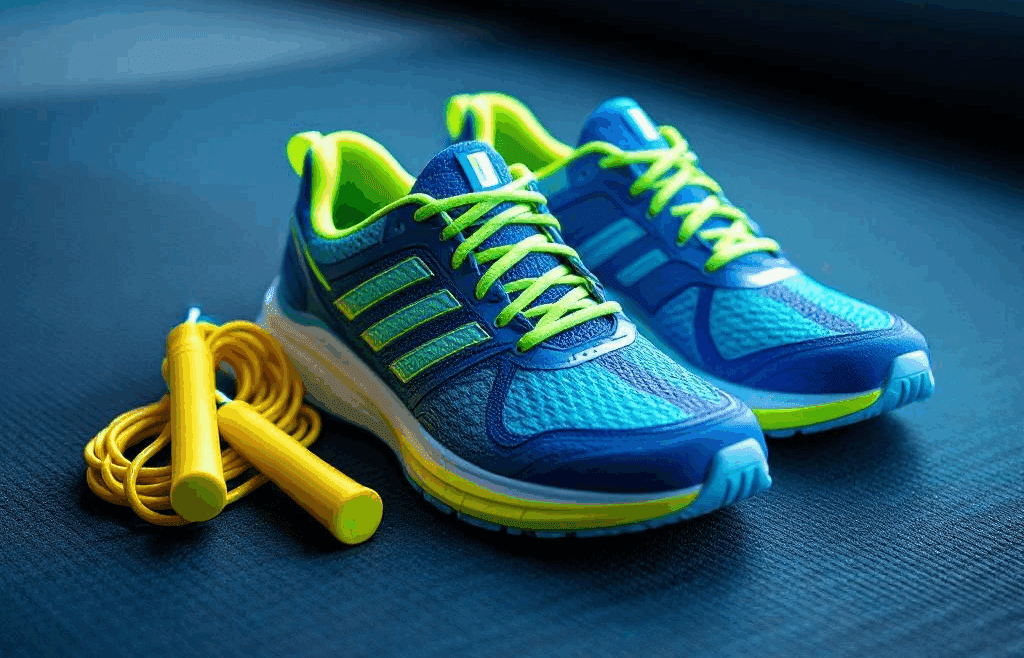|
Getting your Trinity Audio player ready...
|

Thinking about giving jump rope a try? Awesome! Before you grab just any old rope and start bouncing, let’s chat about a few things you’ll need to make your jump rope journey safe, fun and successful. You don’t need a ton of fancy equipment to start jumping, but having the right basics will make a huge difference.
The Right Rope Matters!
This is probably the most important piece of gear. When you’re just starting, you want a rope that’s easy to control and gives you good feedback.
Go for beaded or PVC: These types of ropes are fantastic for beginners.
- Beaded ropes have individual plastic beads strung along the cord. They are especially good for beginners and when learning new skills because the beads give them a nice weight and make rope swing smoothly, which helps you feel the rhythm.
- PVC ropes are solid plastic and are also great for learning. They’re durable and move well.
- Skip the wire ropes (for now!): While wire ropes are super fast and used by advanced jumpers, they can be a bit tricky to control when you’re just starting out. They can also sting if they accidentally hit you (and trust me, it happens!).
- Sizing your rope: To find the right length, stand on the middle of the rope with one foot. The handles should reach somewhere comfortable between your armpits and belly button. If they’re much higher, the rope’s too long; if they’re lower, it’s too short. A properly sized rope will make jumping much easier! Don’t forget that it can always be made shorter as you improve.

The Right Shoes and Surface
Jumping involves a lot of impact, so protecting your feet and joints is key.
Trainers are your best friends: You’ll want good athletic shoes with some cushioning. Running shoes are often a great choice as they’re designed to absorb impact. Avoid super flat shoes like plimsolls or trainers with worn-out soles.
Soft landings: The surface you jump on also makes a big difference.
- A mat or gym floor: These are ideal! A proper gym floor or a jump rope mat provides excellent shock absorption, which helps protect your knees and ankles from impact.
- Avoid concrete or asphalt: Jumping on hard surfaces like concrete or pavement can be tough on your joints over time. If you have to jump outside, try to find a softer surface, even if it’s just for a short session.

Space to Skip and Stay Hydrated!
You don’t need a massive area, but having enough room is important for safety and comfort.
- Enough room to swing: Make sure you have enough space above your head and to your sides so your rope doesn’t hit anything (or anyone!). If you’re indoors, move furniture out of the way. If you’re outdoors, find an open spot away from obstacles.
- Water, water, water! Jumping rope is a fantastic workout, and you’ll definitely work up a sweat. Always have a bottle of water nearby and take sips regularly to stay hydrated. Your body will thank you!

Keep Track of Time
When you’re having fun, it’s easy to lose track of time!
Set a timer: Use your phone, a watch, or a kitchen timer to keep track of how long you’re jumping. This helps you stick to your planned workout time and prevents you from overdoing it, especially when you’re just starting out. Even five or ten minutes of jumping can be a great workout!
Ready to Jump?
So there you have it! Getting started with jump rope is super easy once you have these basic things sorted. Remember, it’s all about having fun, getting active, and seeing how much stronger and more coordinated you become.
What’s the first thing you’re going to do to get ready for your jump rope adventure? Let us know in the comments!



